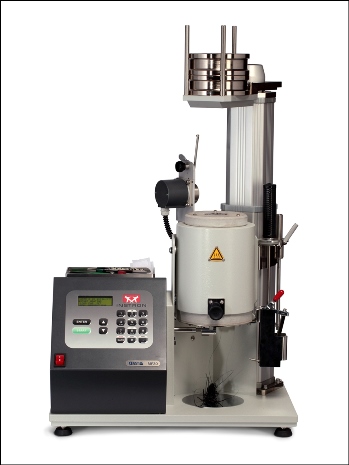Instron, a leading provider of testing equipment designed to evaluate mechanical properties of materials and components, conducted in-house studies to show how to overcome factors that influence Melt Flow test results, or cause reduced repeatability through automatic compacting of the material at force controlled via load-cell.
Melt Flow Rate (MFR) and Melt Volume-Flow Rate (MVR) can normally be obtained with easy and quick test procedures. However, fulfilling all standard specifications can be challenging with some polymers and compounds, resulting in poor repeatability that leads to negatively affected test results.
When testing under low-load conditions (less than 2.16 kg / 4.76 lbs), it is not uncommon that during the pre-heating period the sample swells and pushes the piston upwards. As a solution, Instron recommends applying a compacting force that is higher than the test weight. Additionally, a more precise positioning of the weight lifting device during testing allows the starting position and timing for measurements to be set in a way that allows for greater repeatability.
 The CEAST MF30 Melt Flow Tester.
The CEAST MF30 Melt Flow Tester.
The CEAST MF30 Melt Flow Tester provides the user with increased convenience for easy and accurate measurement of the flow properties of plastics according to ASTM D1238 and ISO 1133. Conforming to strict tolerances with regards to temperature accuracy and stability, specimen quantity and pretreatment, the system complies with the stringent requirements of the new testing standard ISO 1133-2 for materials sensitive to time-temperature history and/or moisture.
A standard feature of the MF30 model is a high-resolution load cell for controlled compacting of the material prior to the start of the test, which has a maximum force of 750 N. Also included in the testing system as part of the standard equipment is a high-precision encoder, which permits the controlled extrusion of the melt to a defined height. The software supplied enables purging of the barrel at the end of a test, specifically when testing low MFR materials.
In-house tests utilising the MF30 system with a load cell and integrated weight-lifting device on HDPE samples show that tests performed without the load cell had a standard deviation of 0.012 g/10 min (close to 5%), whereas tests where the load cell was compacted the standard deviation was as low as 0.005 g/10 min (2%). Similar results were also obtained following ASTM D1238, Procedure B, demonstrating both the increased accuracy and repeatability of the results.